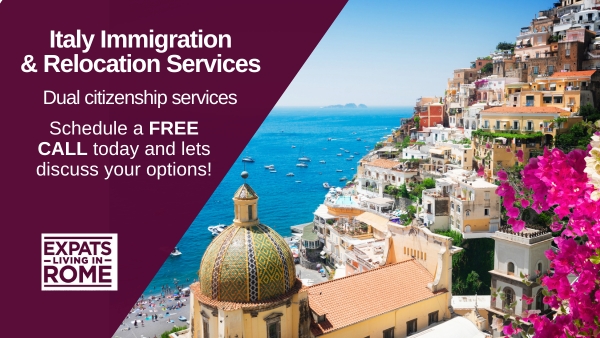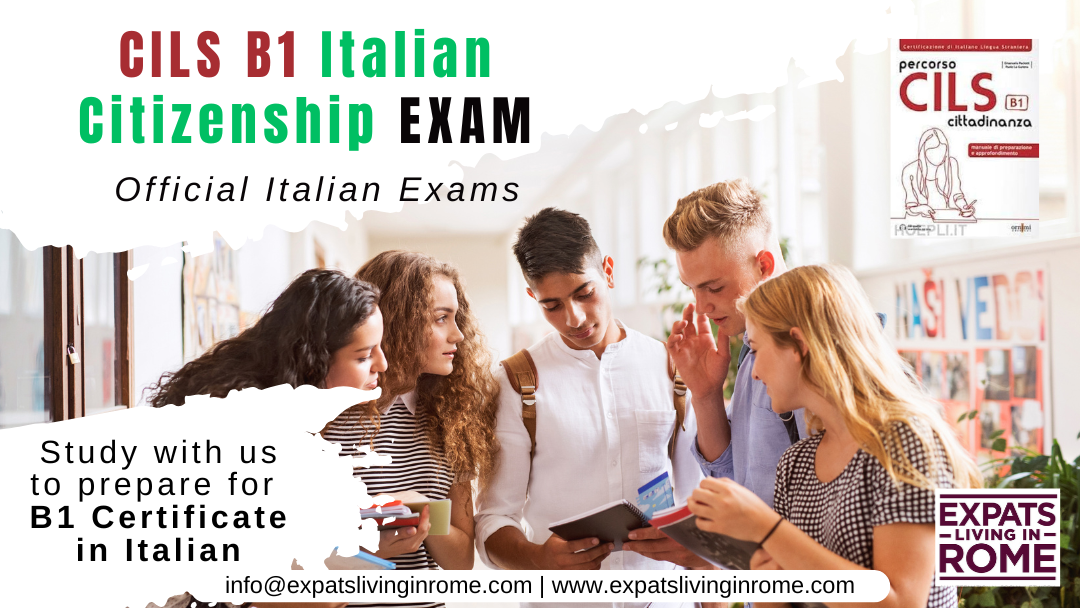FAQs for Italian citizenship by Marriage
In this article, we are going to provide you with FAQs about obtaining Italian citizenship through marriage and how to apply both in Italy and abroad.
Can a spouse of an Italian citizen get Italian citizenship? Yes, a spouse by marriage can obtain Italian citizenship, even if they have not lived in Italy. It is not required to live in Italy to apply.
When can the spouse apply? You can apply after 3 years if you reside abroad and 2 years if you reside in Italy. This timeframe is reduced by 50% if you have children under 18 years old.
Does the spouse need to learn Italian to apply? Yes, knowing Italian at a B1 level has been required since 2018. You will need to take a language test, and the results should be submitted with your application. You can take the test approved by the Italian government.
What changes if you married before 1983? If you are a woman who married before 1983, you do not need to take a language test. The process is different, and you do not need to pay the fee of €250 required for those married after 1983. The government grants citizenship retroactively.
What if your spouse (male) was not a citizen before 1983? Once the male becomes an Italian citizen by descent, it is granted retroactively, and then the wife can apply for citizenship retroactively.
Do you need a criminal (FBI) report to apply? Yes, one of the requirements is not having a criminal record. There are some exceptions.
What if a couple gets divorced? If the couple gets divorced during the application process, the application ends. The couple has to be married during the process to obtain Italian citizenship. If the divorce happens after they obtain citizenship, the spouse does not lose Italian citizenship.
What if the Italian spouse dies during the process? You can still obtain citizenship.
Do I have to reside in the same place to apply? Yes, and if you do not, you have to explain why the residency is not the same. The consulate will have to determine if there is no illegal separation.
How long does it take to process Italian citizenship by marriage? The processing time can range from 24 to a maximum of 36 months.
How do I start the process of Italian citizenship in Italy?
Gather all the documents to support your citizenship application, with apostilles and translations before you arrive. We offer a free review of documents with no obligation for services offered by us.
Step 1: travel to Italy. …
Try to take a direct flight if possible and your passport is stamped on entry. If you are flying from a non-European country directly into Italy your passport will be stamped upon arrival in Italy. If you are flying into another EU country first, your passport will be stamped in the first EU country of arrival and will not be stamped in Italy. In this case, upon arrival in Italy, you will have to submit a “dichiarazione di presenza” (literally “declaration of presence”) to let the Italian government know when you have arrived within 8 days.
Step 2: “Codice Fiscale” and “Dichiarazione di Presenza” …
In Italy, a codice fiscale is akin to a social security number. You use it for everything from signing up for healthcare to purchasing televisions, so it’s highly important.
You must obtain a codice fiscale after handing in your documents and before applying for residency.
To do so, go to the Agenzia delle Entrate office at Via Ippolito Nievo, 48 in the Trastevere neighborhood. You must bring your passport and a photocopy. Tips they will not make photocopies and there is no place near either.
You’ll fill out a form and they’ll give you a number. Once called, you’ll get the codice fiscale. This is an easy process that you can finish in one afternoon. You can also get your codice fiscale before you arrive online.
Step 3: Establish residency. …
Keep in mind that you will need accommodation where you can legally establish residency. For instance, a hotel or Airbnb are generally not suitable accommodations to establish residency. Most comuni generally require a lease agreement, a letter of hospitality, or a deed indicating you own the property.
Step 4: Local Police verification. …
Step 5: Application for citizenship to the local city hall ( Comune) . …
Most of the offices involved in the dual citizenship process accept walk-ins so there is generally no need to make special arrangements beforehand.
The Citizenship office in Rome is located on the second floor at Via Petroselli 50. There, take a number and wait your turn. If the office isn’t busy, they’ll look at your documents right away. If it’s busy, they’ll give you an appointment to come back within 7 days.
They’ll ask for your passport with the entry stamp (or the declaration of presence). We recommend bringing copies of both to save time. Then, they’ll look at your documents in reverse chronological order from your last Italian-born ancestor to you. If everything is in order, they’ll keep your documents and give you a receipt. You use this receipt to start the residency process.
Step 6: Residency permit application (“permesso di soggiorno in attesa di cittadinanza”)
Once you have applied for citizenship, it becomes necessary to apply for a specific residency permit based on the dual citizenship application. This is due to the fact that in most cases the process takes longer than 90 days which is the length of time that a non-European citizen is allowed to stay in Europe which of course includes Italy. This residency permit will allow you to continue residing in Italy past 90 days.
Step 7: Obtainment of citizenship and passport application
The processing time can vary depending on the complexity of the specific case, or comune that processes the citizenship application and other factors. Once citizenship has been formally granted you can apply for a passport directly in Italy. Alternatively, you can register with the AIRE registry (registry of Italian citizens residing abroad) and apply for citizenship at your local Italian consulate in your home country.
Payment: After the first visit and you wait 5-10 days, you can go back to the citizenship office in Via Petroselli to check that your residency is finalized.
If it is, they will send off your application for processing. At this point, you’ll make a 30-euro payment for the administration of your application. The workers will then send a registered e-mail to all your consulates back home to request that they check whether you or your ancestors renounced the right to have Italian dual citizenship.
Be sure to leave an e-mail address and phone number where they can contact you to let you know when your citizenship is recognized.
They will then give you a receipt showing your application is being processed.
Validity of Your Documents
Rome does not accept documents that are more than 1 year old.
The only date that counts here is the date of issue, not the date of apostilling. If your documents are older than 1 year but were apostilled the day before you arrived in Rome, it will not work. The documents themselves must not have been issued more than 1 year before your application.
Do you want to apply for Italian dual citizenship in Italy? We can accompany you through each step. Contact us for more information.
How do I apply for Italian citizenship through marriage if I reside abroad?
Step 1: Make appointments immediately.
Once you’ve determined you qualify for dual citizenship, make an Italian citizenship appointment at your regional Italian consulate office as soon as possible; it can take one to six years to get an appointment. While you’re waiting, you should have plenty of time to gather the documents you’ll need to present to the consulate.
Step 3: Gather all needed documents.
Once you’ve scheduled your appointment, you should immediately start gathering the documents needed to prove eligibility.
• Birth certificate
• Marriage certificate
• Birth certificates for all children under age 18 (if applicable)
• Criminal certificate from the country of origin (valid for 6 months)
You will need certified copies of official paperwork, and all documents must be translated into Italian.
You will also need an apostille for most documents. An apostille is a specialized certificate that is attached to the original document; it indicates that a document is legitimate and authentic for member countries of the Hague Apostille Convention (which includes Italy).
Applying with minor children?
Applying for Italian citizenship with minor children will be automatically included in your citizenship application, provided that you submit certified copies of their birth certificates with Apostille and translation into Italian. You will not need a separate appointment and they will be granted citizenship automatically when your application has been approved.
Step 4: Bring documents to the consulate office.
Step 5: Wait for the approval letter and an Italian citizenship certificate.
It usually takes around 2 to 4 years to receive an approval letter and citizenship certificate. The letter will let you know you’re now a dual citizen and have been registered in AIRE (registry of Italians living abroad). The letter may also discuss requesting your Italian passport and usually encourages new citizens to learn the language and learn about Italian culture.
Step 6: Apply for an Italian passport.
Your last step is getting your Italian passport. You’ll need to get two passport pictures taken (at FedEx or a post office) and purchase a money order for the passport fee, made out to your consulate. You’ll also need to make a clear photocopy of your current U.S. passport. You can mail or bring these things in person with your passport application to your consulate office. You may also need to provide your fingerprints and may need to visit the consulate office to pick up your passport.
Get Help Becoming a Dual Italian-American Citizen
The fastest way to find out if you qualify for Italian citizenship is to work with an expert. A lawyer is not needed and can be quite expensive. We are here to help you navigate and to obtain your Italian dual citizenship requirements, gather the necessary documents, and provide a complete application for you without obstacles. An incomplete package costs more money and time. As some documents will expire and you will have to start over. Contact us at legal@expatslivinginrome.
Is Italian dual citizenship worth it?
If you need help applying for Italian citizenship in Italy or abroad, schedule a free call with us at legal@expatslivinginrome.
Don’t forget to check out our Social Media accounts and subscribe to our Newsletter so you can be updated with information customized for people that want to move, live and love Italy!
FAQs for Italian citizenship by Marriage (2023)
Understanding the Tessera Sanitaria: Your Italian Health Insurance Card
Non-Married Partners: How to Obtain a Residence Permit in Italy as De Facto Cohabitants
How to get tax identification number for foreign citizens (Codice Fiscale)
How to register in Italy as a EU citizen
Mastering Public Transport in Italy
The Advantages of Dual Citizenship with an Italian Passport: Unlocking Boundless Opportunities
What you need to know about Visas and Permits to stay in Italy







